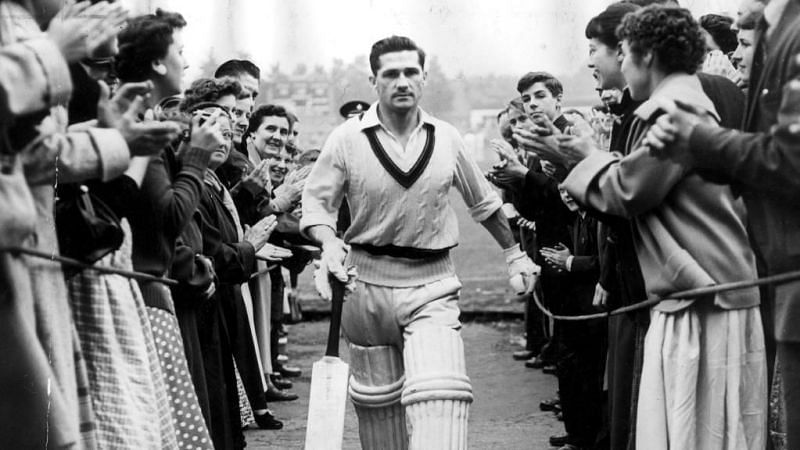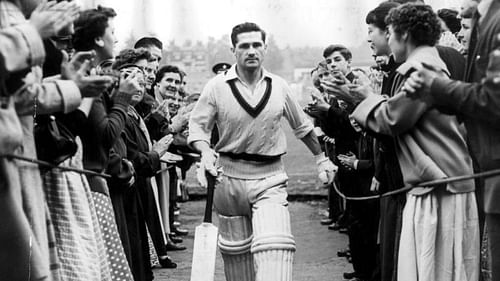
When Neil Harvey masterminded one of the greatest fourth innings chases

The Prelude
Once Sir Don Bradman retired at the end of the 1948 Ashes series, the nation wanted to know who would take his position as the captain of Australia. There were two likely candidates: Arthur Morris and Lindsay Hassett.
Hassett was the outspoken, witty but thorough gentleman who had the capability of representing Australia on a global stage.
Morris, on the other hand, was a mild, modest man who knew how to score big runs. It was a close-run thing but Hassett, by the slimmest of margins, was chosen over Morris and became Australia's first post-war captain.
Keith Miller had a fairly ordinary 1948-49 season in Australia. He was troubled by conjunctivitis and didn't look like the best all-rounder in the world. The selectors, Don Bradman, Chappie Dwyer and Jack Ryder, decided to leave Miller out of the squad they had chosen for South Africa.
It created controversies and headlines but when the team left for South Africa in September, there was no Miller in that ship Nestor. They reached South Africa on 7th October 1949 and didn't play a Test match in the next seventy-six days. How times change!
Bill Johnston, staying in room number 87 in their hotel, went out one evening and faced a nasty accident. Johnston remained in the hospital as Australia searched for a replacement. They found one easily: Keith Miller.
When the Test series finally started on the day before Christmas, Australia looked in fine form. Hassett, Loxton and Harvey scored centuries, and Miller, Johnston, McCool and Lindwall picked up five-fors in the first two Tests. Australia won both matches comfortably.
The drama in Durban
South Africa won the toss and elected to bat on what looked like a good pitch for batting. After the fall of two wickets in the first session of play, Eric Rowan and captain Dudley Nourse steadied the ship.
The pitch looked a featherbed in the next two sessions and they took the score to 240-2 at the end of the first day's play. Then, with the players back in their hotel room, the event that made it the most fascinating of Test matches happened. It was torrential rain.
Nourse and Hassett agreed to postpone play by three-quarters of an hour on day 2. But when it started, it was evident that the nature of the pitch had changed completely. Hassett wanted to dismiss South Africa cheaply but not quickly- he needed the pitch to dry up a bit before his batsmen could go in. His first wish came true but not the second one. Lindwall and Johnston proved too hot to handle and the hosts were all out for 311.
Australia's reply started in a confident manner. The first wicket added 31 in quick time before Jack Moroney played on to a ball from young offie Hugh Tayfield. That was the start of the procession; in the next sixty-odd minutes the remaining nine wickets fell for only 44 runs. Hugh Tayfield finished with figures on 7-23. South African media was ecstatic. The Sunday Express ran the headline: "Joybells ring for Springboks at Kingsmead".
The rest day(Sunday) followed. Dudley Nourse spent the day thinking about whether to enforce the follow-on or not. He checked the weather forecast. It warned him of the possibility of a thunderstorm late on Monday and on Tuesday. Nourse went to the ground very early on Monday and checked the pitch carefully. Then he informed Hassett that they were not enforcing the follow-on.
They were 85-3 in their second innings when lunch was taken on day 3. A lead of 321 already seemed to be enough. Post-lunch the pitch started creating havoc. Bill Johnston and Ian Johnson were unplayable and South Africa lost 7 wickets for 14 runs to end their second innings on 99.
The epic chase
Australia had chased 404 in the Headingley Test a year and a half before this match. But that was a good wicket and on this one, after the rain, 28 wickets had fetched only 245 runs. They needed to score 336 with 10 wickets in the bank. On top of that, a rampant Hugh Tayfield to tackle on that treacherous pitch.
They did rather well to reach 80-3 at stumps on day 3. On day 4, Morris was dismissed after half an hour with 241 still required. It was 'match over' for most people present there.
There were a few close calls but both Harvey and Loxton survived till lunch to give Australia some hope. Post lunch, Loxton was dismissed off a no-ball in the over Harvey brought up his fifty. The tables had clearly turned. At 3:05 pm Loxton was finally dismissed bowled but by then Harvey was in his stride to take Australia home. New batsman Colin McCool survived a few scares before tea was taken with Australia on 267-5.
It was tremendous batting from Harvey. He farmed the strike with ease, besides putting away even the marginally bad balls to the boundary. The sixth ball of Mann's 52nd over was a bit too straight and Harvey flicked it to the mid-wicket fence to win the match for his team. 151* against a good spin attack on a tricky pitch in the fourth innings. As the crowd and the Australians acknowledged the superhuman effort of Harvey, Nourse looked up to the sky: the forecast showers didn't come.
Australia went on to win the five-Test series 4-0.
Neil Harvey's epic innings at Durban is still considered among the finest batting displays in the fourth innings of a Test match.